"Papa; Momma is making Chaler Payesh" I smiled listening to my five-year-old. She loves Chaler Payesh. Though at home we simply call this delicacy Payesh (without prefixing it with Rice or Chal). This was the day of Soptomi and I was cooking Payesh in bulk like every year. I was relaxed and cooking it with love and care. The dish after all calls for slow cooking.
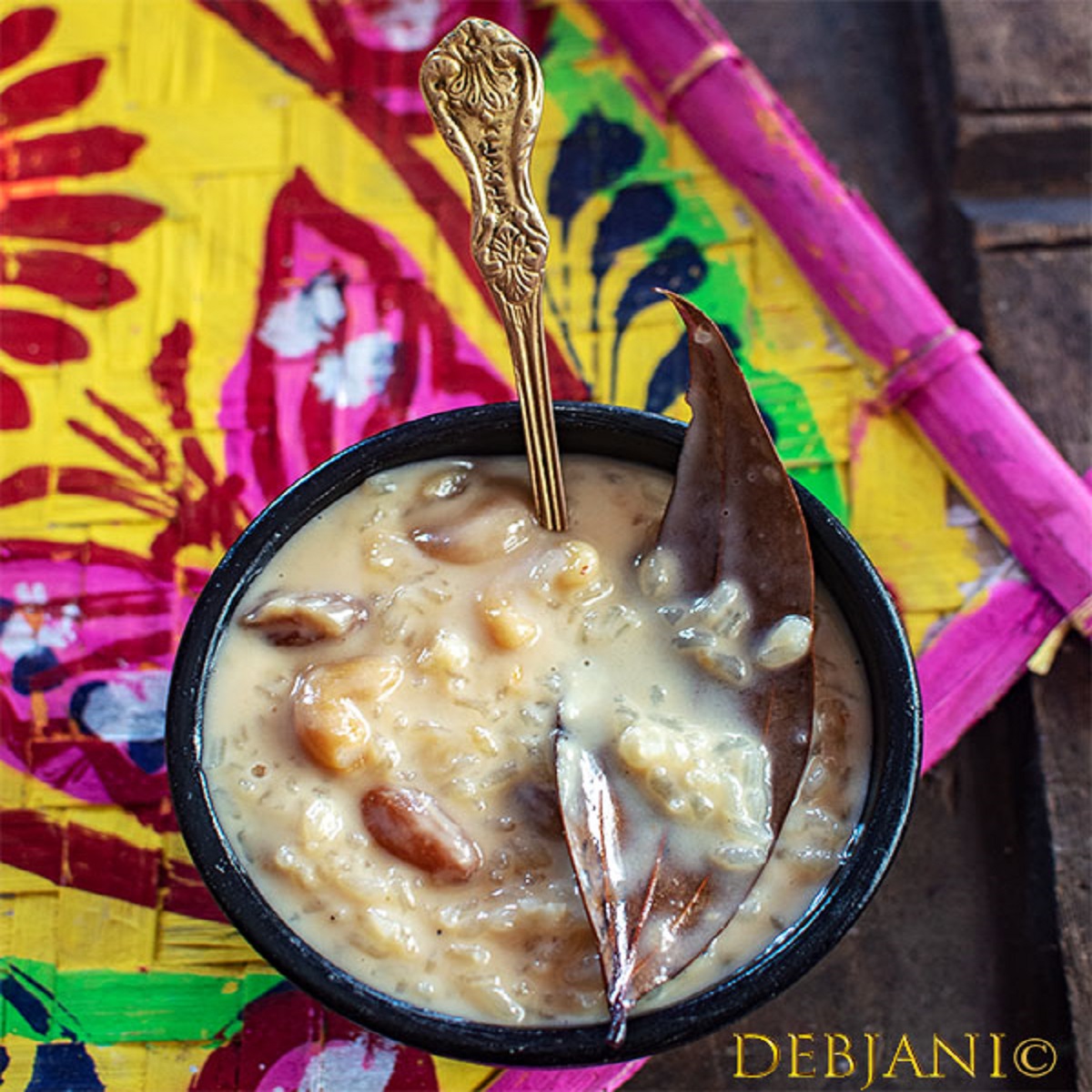
Origin of Chaler Payesh
Chaler Payesh and the name says it all if you are a Bengali. In fact, the emotion will be the same if pronounced as Kheer or Payasam or Kiru or Payox or even Dudhpak or Rice Pudding. A simple sweet delicacy prepared with Rice and Milk needs no introduction actually.
Here in this post, I am mainly talking about the dessert prepared with Rice and Milk but not other forms of Kheer. In fact, I am mainly talking about the Bengali version of this particular dish; Chaler Payesh. Being said that, we cook payesh with other ingredients along with milk as well such as Suji (Semolina), Seviyan or Semui (Vermicelli), and also vegetables and fruits. However, Chaler Payesh seems the mother of all the Payesh.
Coming to the origin of Chaler Payesh, the name Payesh is derived from Sanskrit word Payasam which means Milk. If we go by the definition provided by the Oxford dictionary "An Indian dessert consisting of rice or (in later use) vermicelli, boiled in milk or coconut milk, flavored with cardamom, and often containing groundnuts."
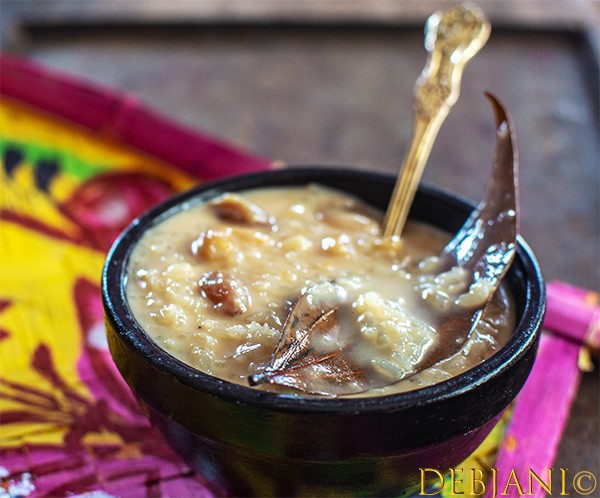
In India, rice is our main staple and has its route way back even before European countries. Rice Kheer is mentioned by Ayurveda as well. The combination of Rice and Milk is nothing but good. This dish is part of "Bhog" at different temples for more than 1000 or more years. In fact, the use of spices (such as Bay leaf, cardamom), etc makes it different and unique if compared to Rice Pudding. The auspicious occasions in India such as Annaprashana, Kheet Chatai, or Akika are incomplete without Kheer or Payesh.
My Poromanno Memories
What else but Jonmodin (Birthday)? The humble event/ party was but Payesh was mandatory and it is till date. This, in fact, is quite common in Bengali households. Our birthdays are incomplete without Maa-made Payesh. My mother, needless to say, makes amazing Payesh. However, it was Mammam (my late aunt) who intrigued me with her Payesh-making skills. I still remember her seating on the floor and cooking Payesh over "Matir Unun" (Traditional earthen stove). It used to take her long to complete the gourmet offering. In our house, it was first served to Thakur (Deities).
Her Payesh-making tricks were unique and probably the best to my knowledge. According to her, Chaler Payesh must not look pale white! It should have a pinkish-white color. She actually was right now I realize! The milk if cooked for hours must not look white and that makes it special. Mammam used to use Batasha (eggless Meringue!) and Michiri/ Misri (Sugar Candy) instead of Sugar for added taste. Last but not least she had a thing for not garnishing Payesh with uncooked raisins and nuts. Mammam used to say the more you slow cook the more is the chance of getting rich Payesh! You may wonder how it is possible to cook the Payesh for an hour (s) when the milk portion is constant! To know the trick you need to read the recipe 🙂 .
Here I must mention; that I though have noticed people cooking Payesh and as they say, I cook it quite well, I don't love Payesh much! Yes, you read it right 🙂 unless it is Gurer Payesh (prepared with Jaggery). I have already mentioned, that I do follow my Jethima's process while cooking Chaler Payesh, however, I do use Condensed Milk for added flavor and richness.
Print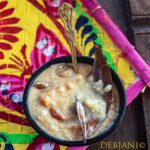
Chaler Payesh aka Bengali Rice Kheer
- Total Time: 1 hour 35 mins
- Yield: 5 Portions 1x
Description
Chaler Payesh is a signature Bengali slow-cooked dessert prepared with Rice, Milk, and also Sugar or other sweetening agents.
Ingredients
- 1 litre Full Cream Milk
- 100ml Condensed Milk
- 1 Tbsp.Ghee
- 100g Gobindobhog Rice
- 50g Cashewnut
- 50g Raisin
- 75g Batasha
- 75g Sugar
- 1-2 Bay Leaf
- 8 Green Cardamom
- 2 Black Cardamom
- A pinch of Camphor (optional)
- 1 litre Water
Instructions
- Soak Rice, Cashewnut, and Raisin separately in water.
- Make a coarse powder of half of the Black and half of the Green Cardamom.
- Take Milk along with half of the water in a deep bottom vessel and start cooking over low flame.
- Add Ghee followed by whole Green and Black Cardamom as well as Bay leaf.
- You need to cook until the milk reduces to ⅔.
- Add Condensed milk and give a thorough mix.
- Now add soaked rice and cook over low flame for 5-6 minutes by covering the vessel with a lid.
- At this point add half of the remaining water and mix with a ladle.
- Now add soaked Raisins and also the Cashewnuts.
- Keep cooking over the low flame until the rice cooked properly.
- Also, add remaining hot water in between.
- Once the rice cooked properly, add Batasha as well as Sugar and give a mix.
- From this point onwards you need to stir more frequently. This is to avoid burning of the Payesh.
- Once the Payesh reached desired consistency, add powdered cardamom and also Camphor and lightly mix.
- Switch the flame off.
- Serve Chaler Payesh in room temperature or after refrigerating for an hour or so.
Notes
- Ghee is optional however highly recommended as it makes the Payesh rich. Also, Ghee helps in preventing the burning of the milk.
- As I have used condensed milk which is sweet itself, I have reduced sugar content. If you are not using it increase sugar based on the requirement.
- Batasha if not available can be replaced with a similar quantity of Sugar.
- Water is the trick in this recipe. The more you boil the milk, the more the taste. Water is added to increase the cooking time and it increases the flavor as well.
- Prep Time: 5 mins
- Cook Time: 90 mins
- Category: Dessert
- Cuisine: Bengali
Nutrition
- Serving Size: 175g
- Calories: 486
- Sugar: 60.1g
- Sodium: 152mg
- Fat: 14.2g
- Saturated Fat: 6.9g
- Carbohydrates: 80.3g
- Fiber: 0.9g
- Protein: 12.1g
- Cholesterol: 9mg
Dessert/ Sweet dish recipes from Debjanir Rannaghar
- Choshir Payesh (also Known as Chushir Payesh
- Narkel Chapa | Narkel Tokti | Bengali Coconut Sondesh
- Bengali Mishti Doi | Laal Doi
- Gajar Ka Halwa (also known as Carrot Halwa)
- Kolar Bora (Bengali Banana Fritters)
- Besan Laddu | Besan Ladoo | Besan Ka Ladoo
- Taler Patishapta Pitha
- Kesar Peda (also known as Saffron Peda)
- Double Chocolate Rum Balls (also known as Rum Ball)
Have you tried the Chaler Payesh Recipe from Debjanir Rannaghar!
Do let me know how it came out. Also, I would love to see a picture of the same which you can share here on dolonchttrj@gmail.com. Meanwhile, on Instagram, you can use my hashtag #debjanirrannaghar and in addition, you can tag me at @foodofdebjani.
You can follow me on Facebook, Twitter, Pinterest and Instagram for updates and recipes from Debjanir Rannaghar.


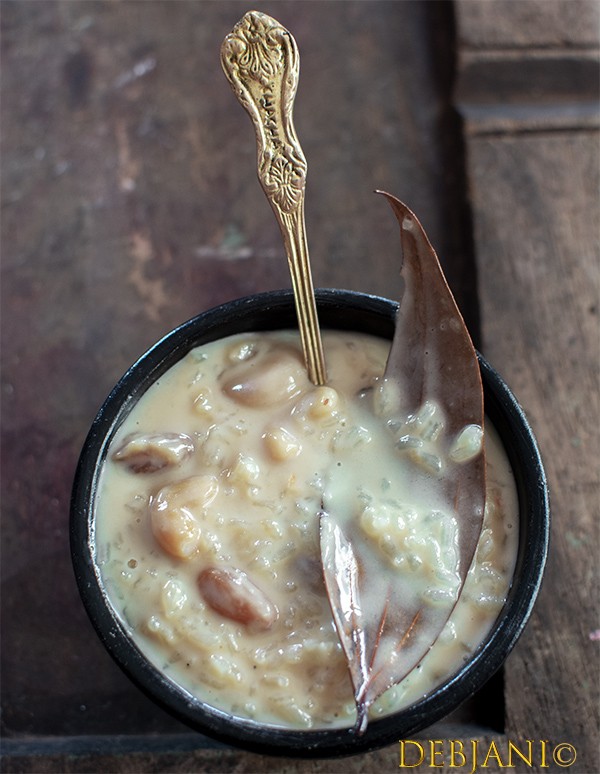

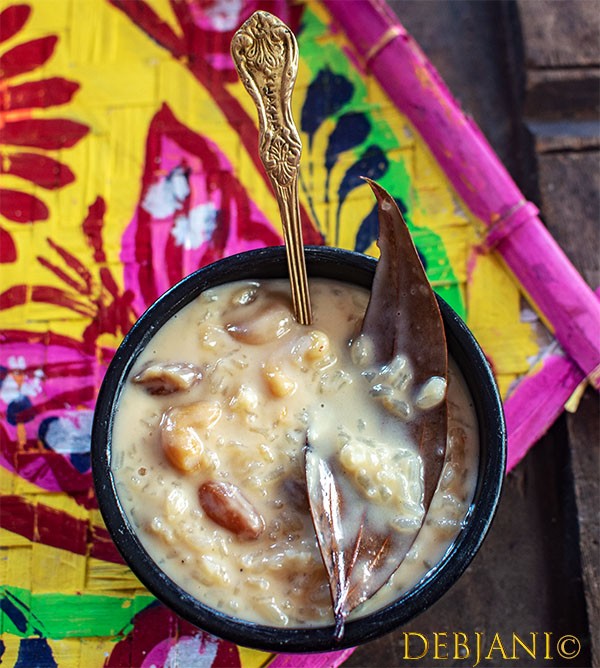


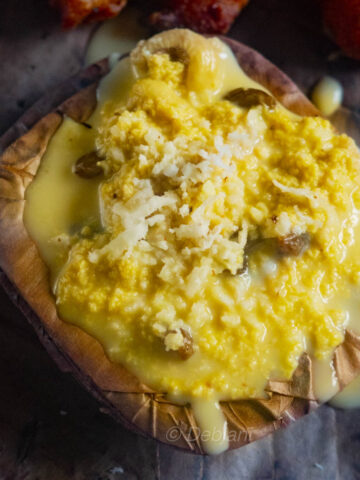
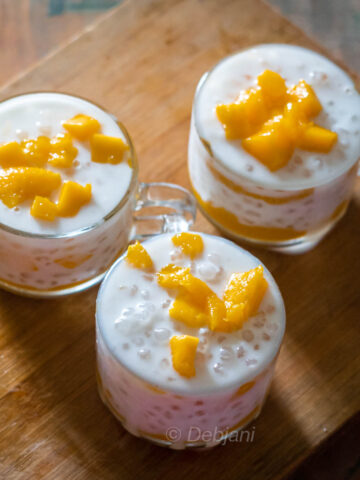
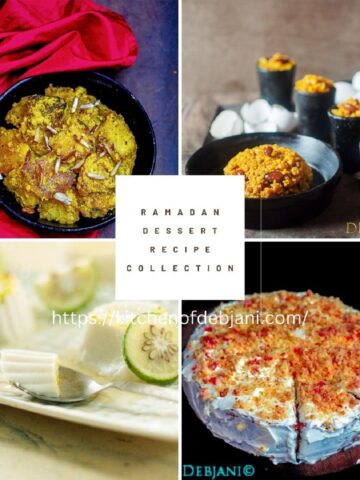

Leave a Reply